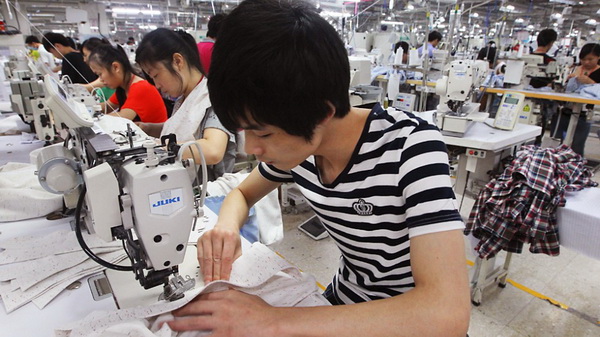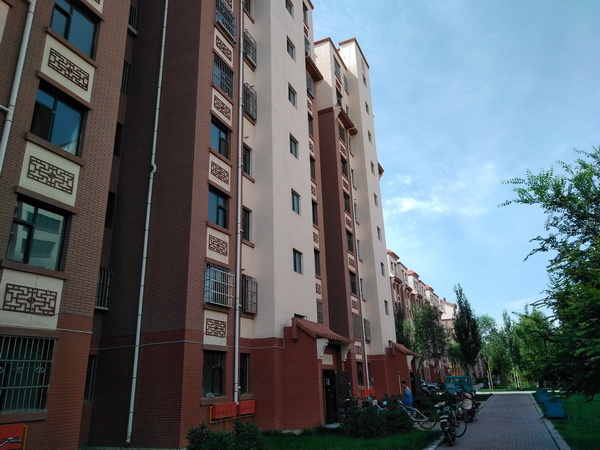


China's promotion of urban migration by unskilled rural for training to work in factories has helped in curbing rural poverty.
China is currently pursuing the Two Centenary Goals to mark two milestones in its history. The first is to end poverty, double Gross Domestic Product (GDP) and per capita income from 2010 levels, and complete the building of a moderately prosperous society by 2020, a year before the 100th anniversary of the founding of the Communist Party of China (CPC) in 1921.
Goals and milestones
The second centenary goal is to become a “prosperous, strong, democratic, culturally advanced and harmonious” modern socialist country by 2049 to celebrate 100 years of the founding of the People’s Republic of China in 1949. Since 1978, 700 million Chinese have been assisted out of poverty, accounting for three-quarters of global poverty reduction during the period.
Addressing over 460 Chinese and foreign journalists on September 21, 2017 in the Great Hall of the People in the capital, Beijing, Chinese Vice Premier Zhang Gaoli – who is also member of the powerful Standing Committee of the Political Bureau of the the CPC Central Committee - promised that the over 40 million poor people still left in the country will be brought out of their predicament by 2020. He added that those still left in their former situation in 2020 will be offered special social security grants to enable them live better lives.

This graphical illustration by Xinhua.net shows the efforts China puts into eradicating poverty
Initial assault on poverty
Presenting an overview of China’s poverty alleviation efforts on August 24, 2017 to 27 African journalists in Beijing, Wu Peng, Director of International Development of the China Foundation for Poverty Alleviation, noted that much has been achieved. Revisiting China’s opening up and reform policy, Wu cited Deng Xiaoping, former Chinese leader as saying: "No matter if it is a white or black cat, so long as it catches rats, it is a good cat." Wu said Deng Xiaoping implied that foreign capital was needed to enable China to develop; no matter its origin. There was another saying, “Cross the river by feeling the stones beneath,” Wu recalled.
Ever since Deng Xiaoping rolled out the opening up and reform policy in 1978, China has witnessed over 10 percent annual growth for more than three decades, he said. Over 700 million people have been lifted out of poverty, assisted by fast economic growth. Under the Special Nationwide Poverty Reduction Policies and Programmes, a number of strides have been made. Deng Xiaoping at the time decided to encourage certain regions of the country to become prosperous in order to assist their poor counterparts. The goal was to achieve common prosperity and harmonious development.
On the other hand, China’s anti-poverty drive has seen the establishment of several poverty reduction organizations. These are the State Council Leading Group on Poverty Alleviation, State Council Poverty Alleviation Office, Provincial Poverty Alleviation Office, Provincial Leading Group on Poverty Alleviation, Prefecture Poverty Alleviation Office, Prefecture Leading Group on Poverty Alleviation, County Leading Group on Poverty Alleviation, County Poverty Alleviation Office and Township Poverty Reduction Staff.
Poverty reduction schemes
Meanwhile, China’s poverty reduction efforts have been made possible by nationwide schemes. They include the 8.7 1994-2000 Poverty Reduction Programme, 2001-2010 First Ten-Year Poverty Reduction Programme, 2011-2020 Second Ten-Year Poverty Reduction Programme and earmarked funds (grants and interest-subsidized loans). Special sector policies and guidelines were developed, and field monitoring and evaluation of poverty reduction efforts was ensured.

Consistent State subsidies to pig farmers explains their growing prosperity today. Photo from China agricultural archives
Under the fixed point poverty reduction programme, 138 central and government offices, together with relevant units as well as 134 central enterprises, were assigned to assist 481 poor counties. The East-West Partnership ensures that 15 prosperous eastern provinces and cities assist 11 western provinces to get out of poverty. On the other hand, social poverty reduction efforts have seen the participation of democratic parties, social groups, charities, private enterprises and volunteers.
Dividends of tackling poverty
In 1978 at the start of the opening up and reform policy, China’s per capita income was only 100 RMB, with 250 million poor people in the country. The incidence of poverty on the total population was 30.7 percent. By 2000, per capita income had risen to 625 RMB, with the incidence of poverty on the overall population falling to 8.9 percent. Some 15 years on, China’s per capita income had tripled to 2,300 RMB. Only 55.7 million people were still living under the poverty line in 2015, with the incidence of poverty reduced to 8.7 percent.
Today, there are just over 40 million poor people left in China. Average per capita disposable income was 12,932 RMB in the first half of 2017, according to data released last July by the Chinese National Bureau of Statistics. The current poor areas are in 592 counties, 11 mountainous areas, Tibet, the Tibetan regions of Sichuan, Yunnan, Gansu and Qinghai, Southern Xinjiang and provincially-designated poor counties.
Final push against poverty
Given its track record in the past 39 years, it is quite possible that China will eliminate poverty in 2020. Ever since overtaking Japan in 2010 as the world’s second largest economy behind the USA, China’s GDP today stands at 11.2 trillion US dollars; as against America’s 18.57 trillion US dollars. This is no small achievement for a nation whose GDP of 147.3 billion US dollars ranked 10th in the world in 1978 when the US was in first position at 2.2 trillion US dollars.

Another area witnessing significant gains in poverty reduction is the provision of better homes for the poor like these blocks of flats in Ningxia Hui Autonomous Region. Photo by Kimeng Hilton
Victory is at hand!
Perhaps, China’s economic leap in the past four decades is better captured by Nigerian journalist, Abdul Gombe: "Many people talk about the Chinese miracle, but I have a different opinion. China’s rapid development is neither a miracle nor luck. Rather, it is the result of focused, determined and committed leadership … You see this everywhere you go in China. Even in simple human relationships, personal relations, you can see the commitment of the Chinese people," commented the Group Managing Director of Leadership Newspaper, Nigeria. Gombe spoke on September 19, 2017 in Dunhuang, Gansu Province in northwestern China at the Media Cooperation Forum on Belt and Road hosted by China’s largest newspaper, People’s Daily.
*Kimeng Hilton Ndukong, a contributor to People’s Daily Online, is Sub-Editor for World News with Cameroon Tribune bilingual daily newspaper in Cameroon. He is currently a 2017 China-Africa Press Centre, CAPC fellow.
 Fire brigade in Shanghai holds group wedding
Fire brigade in Shanghai holds group wedding Tourists enjoy ice sculptures in Datan Town, north China
Tourists enjoy ice sculptures in Datan Town, north China Sunset scenery of Dayan Pagoda in Xi'an
Sunset scenery of Dayan Pagoda in Xi'an Tourists have fun at scenic spot in Nanlong Town, NW China
Tourists have fun at scenic spot in Nanlong Town, NW China Harbin attracts tourists by making best use of ice in winter
Harbin attracts tourists by making best use of ice in winter In pics: FIS Alpine Ski Women's World Cup Slalom
In pics: FIS Alpine Ski Women's World Cup Slalom Black-necked cranes rest at reservoir in Lhunzhub County, Lhasa
Black-necked cranes rest at reservoir in Lhunzhub County, Lhasa China's FAST telescope will be available to foreign scientists in April
China's FAST telescope will be available to foreign scientists in April "She power" plays indispensable role in poverty alleviation
"She power" plays indispensable role in poverty alleviation Top 10 world news events of People's Daily in 2020
Top 10 world news events of People's Daily in 2020 Top 10 China news events of People's Daily in 2020
Top 10 China news events of People's Daily in 2020 Top 10 media buzzwords of 2020
Top 10 media buzzwords of 2020 Year-ender:10 major tourism stories of 2020
Year-ender:10 major tourism stories of 2020 No interference in Venezuelan issues
No interference in Venezuelan issues
 Biz prepares for trade spat
Biz prepares for trade spat
 Broadcasting Continent
Broadcasting Continent Australia wins Chinese CEOs as US loses
Australia wins Chinese CEOs as US loses